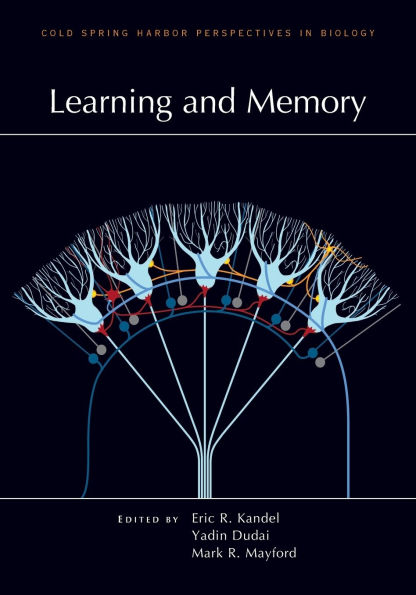Learning and Memory
We learn and remember information by modifying synaptic connections in the neuronal networks of our brain. Depending on the type of information being stored, these changes occur in different regions and different circuits of the brain. The underlying circuit mechanisms are beginning to be understood. These mechanisms are capable of storing or reconstructing memories for periods ranging up to a lifetime, but they are also error-prone, as memories can be distorted or lost.
Written and edited by experts in the field, this collection from Cold Spring Harbor Perspectives in Biology examines important aspects of the neurobiology of learning and memory. Contributors review the various types of memory and the anatomical architectures and specialized cells involved. The induction of synaptic and cell-wide changes during memory encoding, the transcriptional and translational programs required for memory stabilization, the molecular signals that actively maintain memories, and the activation of neural ensembles during memory retrieval are comprehensively covered.
The authors also discuss the model organisms and state-of-the-art technologies used to elucidate these processes. This volume will serve as a valuable reference for all neurobiologists and biomedical scientists as well as for cognitive and computational neuroscientists wishing to explore the remarkable phenomena of learning and memory.
1136631296
Written and edited by experts in the field, this collection from Cold Spring Harbor Perspectives in Biology examines important aspects of the neurobiology of learning and memory. Contributors review the various types of memory and the anatomical architectures and specialized cells involved. The induction of synaptic and cell-wide changes during memory encoding, the transcriptional and translational programs required for memory stabilization, the molecular signals that actively maintain memories, and the activation of neural ensembles during memory retrieval are comprehensively covered.
The authors also discuss the model organisms and state-of-the-art technologies used to elucidate these processes. This volume will serve as a valuable reference for all neurobiologists and biomedical scientists as well as for cognitive and computational neuroscientists wishing to explore the remarkable phenomena of learning and memory.
Learning and Memory
We learn and remember information by modifying synaptic connections in the neuronal networks of our brain. Depending on the type of information being stored, these changes occur in different regions and different circuits of the brain. The underlying circuit mechanisms are beginning to be understood. These mechanisms are capable of storing or reconstructing memories for periods ranging up to a lifetime, but they are also error-prone, as memories can be distorted or lost.
Written and edited by experts in the field, this collection from Cold Spring Harbor Perspectives in Biology examines important aspects of the neurobiology of learning and memory. Contributors review the various types of memory and the anatomical architectures and specialized cells involved. The induction of synaptic and cell-wide changes during memory encoding, the transcriptional and translational programs required for memory stabilization, the molecular signals that actively maintain memories, and the activation of neural ensembles during memory retrieval are comprehensively covered.
The authors also discuss the model organisms and state-of-the-art technologies used to elucidate these processes. This volume will serve as a valuable reference for all neurobiologists and biomedical scientists as well as for cognitive and computational neuroscientists wishing to explore the remarkable phenomena of learning and memory.
Written and edited by experts in the field, this collection from Cold Spring Harbor Perspectives in Biology examines important aspects of the neurobiology of learning and memory. Contributors review the various types of memory and the anatomical architectures and specialized cells involved. The induction of synaptic and cell-wide changes during memory encoding, the transcriptional and translational programs required for memory stabilization, the molecular signals that actively maintain memories, and the activation of neural ensembles during memory retrieval are comprehensively covered.
The authors also discuss the model organisms and state-of-the-art technologies used to elucidate these processes. This volume will serve as a valuable reference for all neurobiologists and biomedical scientists as well as for cognitive and computational neuroscientists wishing to explore the remarkable phenomena of learning and memory.
79.0
In Stock
5
1

Learning and Memory
408
Learning and Memory
408Paperback(Reprint)
$79.00
79.0
In Stock

Product Details
| ISBN-13: | 9781621821601 |
|---|---|
| Publisher: | Cold Spring Harbor Laboratory Press |
| Publication date: | 12/17/2015 |
| Edition description: | Reprint |
| Pages: | 408 |
| Product dimensions: | 7.00(w) x 10.00(h) x 0.80(d) |
From the B&N Reads Blog
